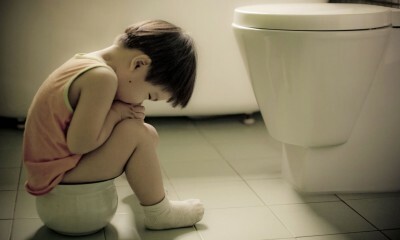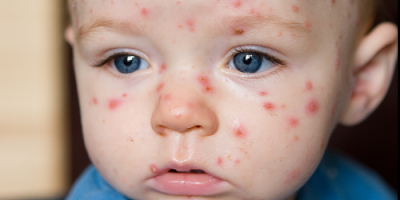1 Causes and Symptoms of
The etiology of diarrhea is of a different nature. It can develop when:
Do you have gastritis?
GALINA SAVINA: "How easy is it to cure gastritis at home for 1 month. A proven method is to write down a recipe. ..!"Read more & gt; & gt;
- non-compliance with the feeding regime;
- acute intoxication;
- infection of the intestine;
- enzymatic imbalance of the digestive tract, hormonal mechanism;
- inflammation of the intestine and pancreas;
- prolonged therapy with potent antibiotics;
- dysbiosis;
- is a nervous overexertion.
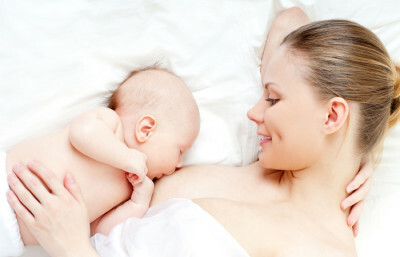
Recommended to read
- Lactose insufficiency in children
- Treatment of intestinal candidiasis with folk remedies
- What to do, diarrhea the third day
- Effective remedy for gastritis and stomach ulcer
Most often diarrhea in children occurs at the beginning of the first year of life and is associated with a violation of hygiene requirementsinsufficiently clean nipples, bottles), overfeeding( inconsistency of age with quantity or quality of food), lactase intolerance, allergic reactions to cereals and other conditionsfood.
When a child has diarrhea, an extremely insidious and dangerous problem arises, as the dehydration of the body takes place very quickly with respect to the total body weight. When watery stool from it is derived from 50 to 100 ml of fluid, in older children after 5 years - 100-200 ml. The digestive system in infants is sensitive to the introduction of artificial nutrition. And the period of teething can become an additional factor of intestinal distress.
The main symptoms associated with the disease are associated with a reduced fluid balance. Diarrhea in the child's water causes constant thirst, dryness and reduction in the elasticity of the skin, lethargy, refusal to eat, springing of the fontanel. Clinical analyzes show a sharp decrease in the amount of excreted urine( becomes dark and concentrated) and the frequency of urination( under 2 years - up to 10 times, older - 4-5 times).In this case, the crumb should be sent to the inpatient department of the children's polyclinic.
Liquid stools are of different consistency - similar to mush with pieces of undigested food or watery with additional inclusions of pus, mucus, blood and a pungent odor. When infectious infections develops foamy diarrhea with water( a symptom of rotavirus infection), which has different color shades. When lesions with salmonella, feces stain in the color of marsh grass, with hepatitis - in white, with amoebic dysentery - in crimson grass. In addition, there is vomiting, pain in the abdomen, fluctuations in body temperature.
-
 IMPORTANT TO KNOW! Gastritis? Ulcer? To have a stomach ulcer not turned into cancer, drink a glass. ..Read the article & gt; & gt;
IMPORTANT TO KNOW! Gastritis? Ulcer? To have a stomach ulcer not turned into cancer, drink a glass. ..Read the article & gt; & gt;
2 Unbalanced nutrition
Insufficient attention to the combination of different products( for example, fresh fish and milk while simultaneously taking them, the abundance of food) provokes the formation of a fermentation effect. This is especially true for long trips, the so-called "traveler's diarrhea", after visiting guests, a festive feast. Often, all ends with minor ailments in the activity of the gastrointestinal tract, liver, and enzymatic organs. Less often it is necessary to restore functions by using enzyme preparations( mezim, festal), antidiarrhoeal agents( imodium, loperamide) or activated charcoal. But, when an infant is less than 2 years old, its physiological capabilities are not taken into account, and this leads to undesirable consequences in the form of the appearance of loose stools, regurgitation or vomiting, intestinal colic.

Disorders of the digestive tract( dyspepsia) are eliminated by a gradual return to normal diet. It is advisable to skip one or two meals and replace them with a weak infusion of chamomile, saline mixture - saline solution or 5% glucose solution. When you have a desire to eat during the first day, feed the crumb until 2 years of age only with mother's milk or tested mixtures ofset mode, but the portion should be half the usual size. It is forbidden to supplement supplemental feeding, so as not to provoke a repetition of the disorder. On the second day, the volume of food for the baby can be increased to 1/2 from the established age and within 4 days to bring to normal. Only on the 5th day the doctor can allow to give additional food while taking enzyme preparations or sorbents.
-
 Gastroenterologist VAZHENOV: "I beg you, if you began to worry about abdominal pain, heartburn, nausea, do not in any way do gases. .."Read more & gt; & gt;
Gastroenterologist VAZHENOV: "I beg you, if you began to worry about abdominal pain, heartburn, nausea, do not in any way do gases. .."Read more & gt; & gt;
3 Food poisoning, infections, dysbacteriosis, allergies
Severe diarrhea in children with intoxication with poor-quality food, infection with intestinal pathogens manifests itself in the form:
- vomiting;
- pain in the head and abdomen;
- violation of the thermal control system;
- general malaise( drowsiness, weakness).
Acute respiratory and viral infections can also contribute to the emergence of liquid feces with concomitant catarrhal symptoms - coughing, runny nose, pain in the larynx. Dysbacteriosis, which occurs against the background of long-term use of antibiotics, is a dysfunction of the digestive organs, resulting in the suppression of beneficial intestinal microflora. Diarrhea in a child( 2 years) is observed in the form of the following symptoms: bloating, alternating diarrhea and constipation. The stool has a very unpleasant smell, a liquefied consistency with the color of marsh mud.
ADVICE FROM THE MAIN GASTROENTEROLOGIST
Korotov SV: "I can recommend only one remedy for the rapid treatment of Ulcer and Gastritis, which is now recommended by the Ministry of Health. .." Read the reviews & gt; & gt;
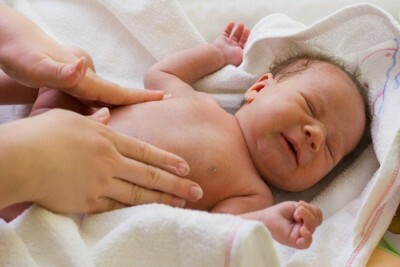
It is not ruled out that diarrhea in children develops as a consequence of food allergy, endocrine disorders, emotional fatigue, the experience of fear, which in folk art is called "bear illness".There are other, more rare, causes of irritation of the digestive system in the baby. Therefore, when the first signs of a malaise are noticed, it is necessary to immediately seek help from medical staff.
4 Hereditary diseases
Gluten enteropathy is associated with the immunity to biostructures of a protein of cereal crops - gluten, which is the basis of wheat, rye, oats. The disease becomes noticeable after the first 2 years, when the child can eat flour products, all kinds of porridge. Circumstances arising from the transmission of hereditary damage in the gene structure or GI diseases lead to the development of foamy stools, weight loss, growth retardation, and disorders of fat and protein metabolism.
How to cure diarrhea with gluten therapy? The basis of the treatment is to maintain a gluten-free diet. It is necessary to completely remove all products that contain manna, oat, pearl, wheat cereals, pasta, bread and confectionery sweets. Normalization of the stool occurs within 2 weeks, the body weight is restored in a year, and growth - for 2 years. In this case, you must always monitor the diet and quality of food.
WE RECOMMEND!
For prevention and treatment of gastrointestinal diseases our readers advise Monastic tea. This unique remedy consists of 9 medicinal herbs useful for digestion, which not only supplement, but also strengthen each other's actions. Monastic tea will not only eliminate all symptoms of the gastrointestinal tract and digestive system, but will also permanently eliminate the cause of its occurrence.
The opinion of doctors. .. "
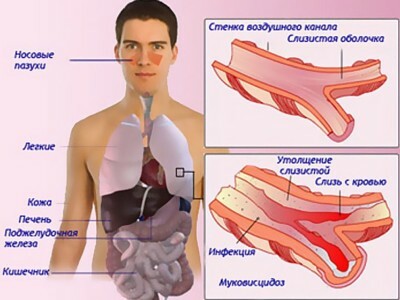
Another cause of diarrhea can be a genetic disease - cystic fibrosis, affecting the endocrine glands, especially the digestive and respiratory systems. Alternating constipation and diarrhea can reach such a state that one has to resort to surgical intervention. Treatment of diarrhea is symptomatic. Crohn's disease or specific ulcerative colitis is expressed in very serious symptoms of severe inflammation of the mucous membrane of the large intestine. The disease can last for years. The liquid stool is accompanied by the allocation of scarlet blood and pains in the abdomen.
5 Lack of milk enzyme
One of the serious genetic problems that causes stool disorders is lactase deficiency. It is explained by the complete absence or lack of the enzyme lactase, which cleaves lactose - a dairy carbohydrate. The amount of enzyme in the body can vary during life and depend on the transferred gastrointestinal diseases, hormonal system and other factors. At the child 3 years( 4 years) a life the failure of a lactose gradually disappears, as there is a final formation of organs GASTROINTESTINAL TRACT.Practice shows that the symptoms of milk intolerance become noticeable literally from the very beginning of breastfeeding. After each meal, there is an abundant liquid stool with a sour smell, bloating, belching and vomiting. The child is not gaining weight. Clinical analyzes confirm the diagnosis of lactase intolerance by the presence of carbohydrates in the feces.
How to treat diarrhea in children, only a pediatrician can determine. The main condition is a ban on the use of milk. After 4 days of absence in the diet of milk, the intestines calm down, all symptoms disappear, and diarrhea ceases. On the 5th day, weight gain begins. Today, there are milk formulas that either do not contain lactose at all, or where it is present in a minimal amount. Switching to artificial nutrition is carried out for 2-3 days.

To treat diarrhea in a child, physicians suggest the use of a pharmacological agent - lactase, which is a lactose enzyme. When the baby's body is rejected, the drug should be switched to artificial feeding, which does not contain lactose. Since dairy carbohydrates can be contained in other foods as a component, older children with lactase deficiency should be given caution. With a hereditary deficit of a dairy enzyme - strictly adhere to a lactose-free diet for the rest of your life. Temporary malaise due to underdevelopment of the intestines of the baby can be eliminated during the year with a further gradual introduction into the diet of dairy products.
6 What do I need to know about diarrhea?
Than to treat diarrhea? To prevent dehydration of the body should gradually fill the loss of fluid and salts. Special solutions - Regidron, Glucosolan, Citroglycosolan - are sold in pharmacies and are used in accordance with the instructions. The correct consumption of the drug is indicated by the restoration of urination. It is not forbidden to drink a decoction of chamomile or rice, mineral non-carbonated water, compotes without sugar, water-diluted fruit juices. As herbal fees can be used:
- color of chamomile;
- oak bark;
- sage leaf;
- plantain;
- fruits of blueberries or bird cherries.
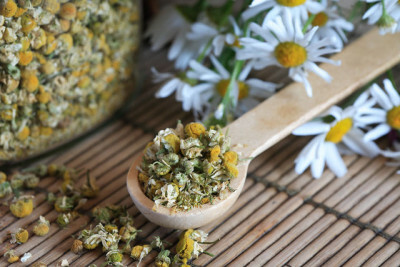
A good prescription for preventing a liquid and painful stool includes 250 ml of orange juice, a pinch of table salt and a teaspoon of sugar.
Treatment of diarrhea in children in acute cases, along with the use of natural remedies must necessarily be supported by pharmacological drugs. Well-proven absorbing substances in the form of activated carbon, smectas, enterosgelya and others. With flatulence, bloating, esputum or disflavil is useful. When the area of the intestine covers the surrounding pain, it is necessary to take antispasmodic medications - no-shpu, papaverine. All medicines are used according to the prescription prescribed by the pediatrician.
To properly treat diarrhea in a child, you must adhere to the diet. The old rule says - if the child does not want to eat during diarrhea, then it is not necessary to force it. From the diet it is necessary to completely eliminate fried, fatty, smoked and salty foods. Products that promote bowel activity are not acceptable. These include: milk, cabbage, pickled vegetables, onions, tomatoes, cucumbers, apples, kvass, sugar.
You can take jelly, mashed potatoes in water with vegetable oil, rice soup, porridge on the water. Of fruits are useful pear, quince, dogwood, cranberries, blueberries. Cautiously give boiled meat and fish. The smallest - breast infants - it is advisable to continue feeding with mother's milk."Artificial" is transferred to a soybean, low-lactose or lactose-free mixture.
Diarrhea in children can be eliminated by joint efforts of doctors and parents, while following all prescription instructions.
- 1 Causes and symptoms
- 2 Unbalanced diet
- 3 Food poisoning, infections, dysbacteriosis, allergies
- 4 Hereditary diseases
- 5 Lack of milk enzyme
- 6 What you need to know about diarrhea?
Diarrhea in a child is a pathological state of the gastrointestinal tract, which occurs against the background of the influence of external stimuli and disorders in the functioning of the body's functional systems. Preventative measures are taken to prevent the disease, and when the first symptoms appear, they immediately seek the help of a doctor. Timely access to a specialist will prevent the occurrence of complications and other adverse reactions.


